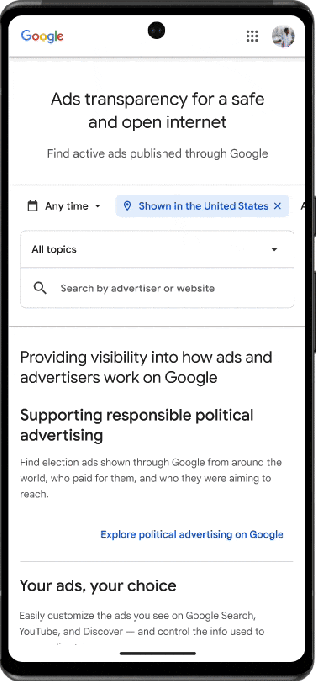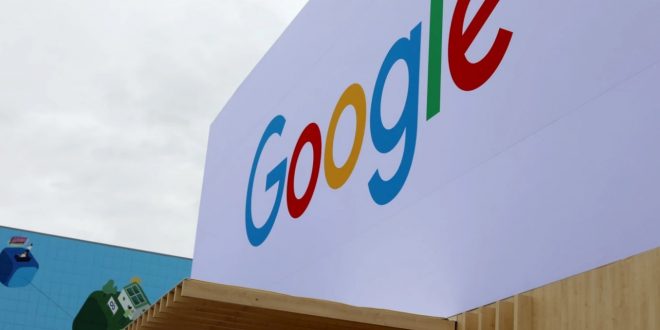Search, Display, and YouTube ads from verified advertisers can now be found in a single unified hub on Google’s new Ad Transparency Center.
Accessible via this link or the My Ad Center page, the new transparency hub provides information about when and where a particular brand’s ads were shown, as well as the length of time since the brand’s last campaign and the format used. If an ad displays potentially harmful products or inappropriate content, for example, a user may choose to like, block, or report the ad for violating Google’s ad policies. The launch of the Center has begun, and it will be accessible to all users within the next few weeks.
Last year, Google introduced the My Ad Center hub where users can view data about ad topics, brands, and the most recent ads they saw across Search, YouTube, and Discover. Users have the option to disable personalized ads entirely, remove specific topics or brands, or modify these settings. Bear in mind that this in no way eliminates the possibility of seeing advertisements. It just won’t take into account your individual tastes and search history.
According to Google, out of the 70 million users who visited the My Ad Center page after launch, 20% did so to change their ad settings. This seems like a relatively small number compared to the billions of people who use Google’s services every day.
Customers will be able to learn more about previously unknown brands and see if they have been verified by Google, according to the Mountain View company.

By making ads more secure, reputable, and transparent, we can better ensure the safety of our users. Google’s Director of product management for Ads Safety, Alejandro Borgia, has made a statement about how the Ads Transparency Center will make users more informed about the ads they encounter on the search engine.
Google has been working to expand the platform’s brand advertising data set.
Users have had access to an advertiser’s past activity on Google since last September. A month later, the tech giant changed the “Ad” label on mobile search to “Sponsored” to increase its prominence. In addition, the tag is now displayed above the URL rather than to its right.
The search engine also released an Ad Safety Report to detail its work to prevent malicious advertisements. The company claims to have removed or blocked 5.2 billion advertisements, limited over 4.3 billion advertisements, and suspended 6.7 million advertiser accounts.
Google announced last year that it had extended its certification program for financial services to eleven additional countries, including the United Kingdom, Australia, and Singapore. To combat financial fraud, this initiative calls for proof of official authorization from local authorities before advertising can be displayed. Google has updated or introduced 29 policies in the last year to ensure the safety of its users in relation to advertisements.
The company’s advertising division is under intense scrutiny in the United States. The US Department of Justice charged Google with antitrust violations in the ad market in January. The Department of Justice filed a complaint, which was joined by eight states including New York and California, to “halt Google’s anticompetitive scheme, unwind Google’s monopolistic grip on the market, and restore competition to digital advertising.” Alphabet, the parent company of Google, asked a federal judge to throw out the case earlier this week.
 Tech Gadget Central Latest Tech News and Reviews
Tech Gadget Central Latest Tech News and Reviews




